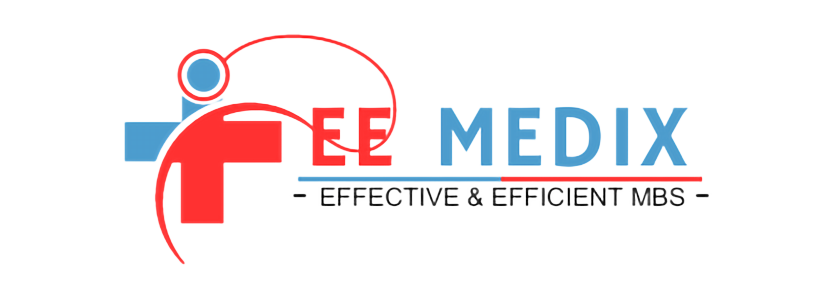In the complex landscape of healthcare, the credentialing process stands as a pivotal gatekeeper, ensuring the delivery of quality care. This meticulous procedure is not merely a formality; it is a comprehensive evaluation that delves deep into the professional background of healthcare providers. Let’s explore the intricacies of what happens during a credentialing process, identifying red flags, understanding the data collected, and uncovering the methods involved in this critical evaluation.
What Happens During the Credentialing Process?
The credentialing process is a rigorous examination undertaken by healthcare organizations to validate the qualifications and professional history of a practitioner. At its core, this multifaceted process involves verifying academic credentials, licensure, training, and any relevant certifications. Healthcare entities collaborate with various credentialing bodies to ensure that the individuals joining their ranks meet the highest standards of competence and ethical conduct.
During this evaluation, a meticulous review of the practitioner’s work history is conducted. This includes assessing their professional experience, affiliations with other healthcare institutions, and any history of malpractice or disciplinary actions. By scrutinizing the practitioner’s track record, healthcare organizations aim to guarantee that they are bringing on board individuals with a stellar professional standing.
Red Flags in Credentialing: Identifying Potential Issues
In the quest for excellence, credentialing also serves as a tool to identify potential red flags that may compromise the quality of care. Red flags can manifest in various forms, from discrepancies in the provided information to past ethical violations. Organizations pay special attention to inconsistencies in education and licensure documentation, as these can be indicative of misleading or fraudulent practices.
Any history of malpractice claims or disciplinary actions taken against a practitioner is a significant red flag. This information is thoroughly investigated to assess the severity and context of the issues raised. Transparency is paramount, and healthcare organizations prioritize practitioners who demonstrate accountability for any past shortcomings.
Information Gathering in Physician Credentialing
The physician credentialing process is a data-intensive endeavor, aiming to compile a comprehensive profile of the healthcare professional. The information gathered spans a broad spectrum, encompassing educational achievements, residency programs, fellowship training, and board certifications. We meticulously review details about current and previous hospital affiliations, clinical privileges, and any adverse credentialing history, in addition to the formal qualifications.
Moreover, healthcare organizations delve into a practitioner’s work history, assessing the range and complexity of cases they have handled. This holistic approach enables organizations to ascertain not only the depth of clinical expertise but also the practitioner’s adaptability to diverse healthcare environments.
Three Methods Involved in Credentialing
- Primary Source Verification: The gold standard in credentialing, primary source verification involves directly confirming the accuracy of information with the source. This may include contacting educational institutions, licensing boards, and previous employers to validate credentials and work history.
- Credentialing by Proxy: In cases where primary source verification is challenging, credentialing by proxy allows healthcare organizations to rely on trusted intermediaries, such as reputable credentialing services, to verify the information on their behalf. This method ensures a thorough examination without direct involvement in the verification process.
- Ongoing Monitoring: Credentialing is not a one-time event but an ongoing process. Healthcare organizations implement systems for continuous monitoring, staying abreast of any changes in a practitioner’s licensure status, certifications, or legal actions. This proactive approach ensures that only current and qualified individuals remain part of the healthcare team.
Conclusion: Elevating Healthcare Standards Through Rigorous Credentialing
In conclusion, the credentialing process is the linchpin of maintaining excellence in healthcare delivery. By meticulously examining the qualifications, work history, and ethical standing of practitioners, healthcare organizations uphold the highest standards of patient care. Identifying red flags, gathering comprehensive information, and employing varied credentialing methods contribute to a robust evaluation that guarantees the caliber of healthcare professionals entering the system.
1. What is the Credentialing Process?
The credentialing process is a thorough evaluation conducted by healthcare organizations to assess the qualifications, professional history, and ethical standing of healthcare providers. It ensures that practitioners meet the highest standards of competence before joining a healthcare institution.
2. Why is Credentialing Important?
Credentialing is crucial for maintaining the quality of healthcare services. It verifies the qualifications of practitioners, identifies any red flags, and contributes to the overall assurance of delivering safe and effective patient care.
3. What Happens During the Credentialing Process?
The process involves verifying academic credentials, licensure, training, and professional experience. It includes a meticulous review of a practitioner’s work history, affiliations, and any history of malpractice or disciplinary actions.
4. What are Red Flags in Credentialing?
Red flags can include discrepancies in information, misleading documentation, and a history of malpractice or disciplinary actions. These indicators are thoroughly investigated during the credentialing process.
5. What Information is Gathered During Physician Credentialing?
Physician credentialing gathers comprehensive information, including educational achievements, residency programs, board certifications, hospital affiliations, clinical privileges, and any adverse credentialing history.
6. What are the Three Methods Involved in Credentialing?
- Primary Source Verification: Directly confirming information with the source.
- Credentialing by Proxy: Relying on trusted intermediaries for verification.
- Ongoing Monitoring: Continuously monitoring changes in a practitioner’s status.
7. How Long Does the Credentialing Process Take?
The duration varies but generally takes a few weeks to a few months. The meticulous nature of the process ensures accuracy and reliability.
8. Is Credentialing a One-Time Process?
No, credentialing is an ongoing process. Healthcare organizations implement systems for continuous monitoring to stay updated on any changes in a practitioner’s qualifications or legal status.
9. Can a Practitioner Appeal a Credentialing Decision?
Yes, practitioners usually have the right to appeal a credentialing decision. The appeal process allows for a fair review of any disputes or discrepancies that may have arisen.
10. How Can Healthcare Organizations Ensure a Smooth Credentialing Process?
Healthcare organizations can streamline the process by maintaining clear communication with practitioners, providing detailed documentation, and leveraging technology for efficient data exchange.

